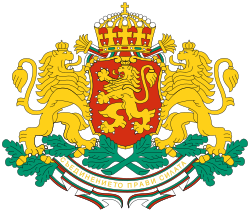History
In the early 7th century AD, groups of Bulgars, one of the ancient peoples that participated in the ethnogenesis of the modern Bulgarians, settled in the Italian Peninsula. The main migration was headed by Altsek, a Bulgar leader who initially joined the Avar Khaganate before switching allegiance to the Germanic Lombards. Altsek and his people arrived in the Exarchate of Ravenna, where Grimoald I of Benevento invited them to populate the Duchy of Benevento. According to the Gesta Dagoberti I regis Francorum , Altsek's Bulgars settled in what are today the communes of Isernia, Bojano and Sepino. Altsek remained the leader of the Bulgar-populated areas, bearing the title gastald. [3] [4] [5] [6]
It is uncertain whether this Altsek can be identified with another Bulgar lord, Altsiok. According to the Chronicle of Fredegar, Altsiok deserted the Avar Khaganate in 631–632. Altsiok settled in Bavaria with 9,000 Bulgars under Frankish king Dagobert I. Altsiok is known to have moved to the Venetian March with his 700 remaining men after Dagobert I slaughtered most of his people. [3] [4] [5]
Paul the Deacon in his Historia Langobardorum writing after the year 787 says that in his time Bulgars still inhabited the area, and that even though they speak "Latin," "they have not forsaken the use of their own tongue." [7] In later times they had evidently become completely assimilated.
Human graves of a steppe nomadic character as well as horse burials dated to the second half of the 8th century AD attest to the presence of Bulgars in the Molise and Campania regions. [8] Toponyms containing the root bulgar and personal names such as Bulgari and di Bulgari continued to appear in medieval documents relating to the Italian Peninsula.
In the 17th century, Bulgarian Roman Catholics often visited Rome in their attempts to negotiate support for a Bulgarian uprising against the Ottoman Empire. Prominent religious and public leaders such as Petar Bogdan and Petar Parchevich spent time in the city (see Chiprovtsi Uprising). The first book printed in modern Bulgarian, Abagar , was published in Rome in 1651. [5]
This page is based on this
Wikipedia article Text is available under the
CC BY-SA 4.0 license; additional terms may apply.
Images, videos and audio are available under their respective licenses.

